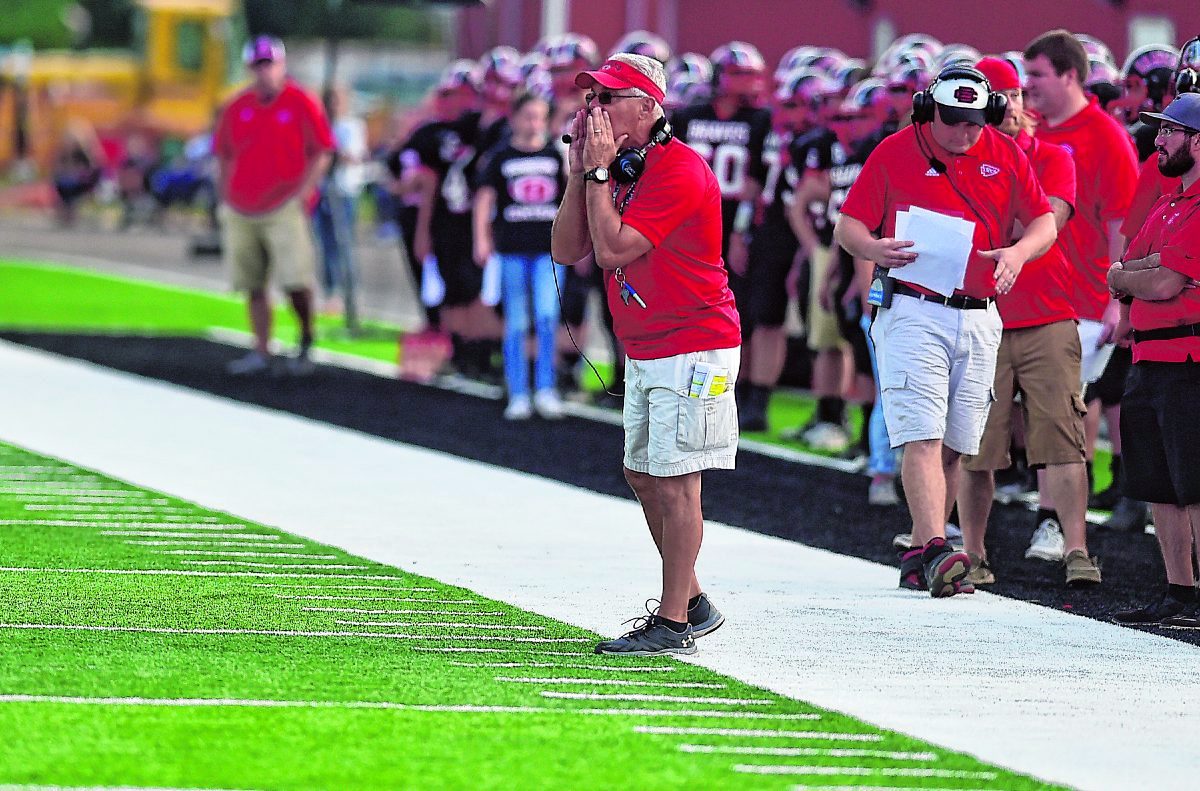
The latest protocols decreed by the Indiana High School Athletic Association have shifted opening day for offseason fall workouts beginning to July 6.
It had previously been announced those sports teams would be able to begin working with coaches July 1.
Also, the IHSAA issued overall guidelines for easing back into activities in response to the COVID-19 pandemic.
Sports across the United States were shut down in March, from the high school level to the professional leagues. Leagues such as the NBA, NHL, NFL and Major League Baseball are still finalizing their plans to resume play even as the coronavirus has surpassed 7 million cases with more than 400,000 deaths worldwide.
[sc:text-divider text-divider-title=”Story continues below gallery” ]
Athletic directors and football coaches were mulling the information from the governing body of Indiana high school sports, drawing up their own rules for play by establishing policies within the guidelines.
"It got changed," Seymour High School Athletic Director Kirk Manns said of the date switch when asked what happened to the July 1 start-up. "It’s all from the state levels. Facilities don’t get to open until July 6. Every school is doing the same thing."
Brownstown Central High School Athletic Director Mark DeHart said he is working on reviewing the in-depth guidelines and developing the plan for his school.
"It is very detailed," he said of the IHSAA paperwork that runs for several pages. "I was a little overwhelmed at first. We’re trying to put a local plan together."
The July 6 to 19 period is a first stage and stresses all summer activities are voluntary. There are rules for hours of participation, for coaches to register conditioning and practice days, the size of groups for activities should be limited and social distancing followed.
When students are not actually lifting weights or participating in an activity, they are supposed to wear face masks. Coaches, medical staffs, supervisors or security personnel are supposed to wear face masks at all times.
Numerous aspects of the planning revolve around Centers for Disease Control and Prevention recommendations as protective actions against the virus, including warm-water handwashing, be trained to identify warning signs of the virus and students and staff members are supposed to be screened for symptoms.
Policies of response will be put in place if COVID-19 is detected.
During this period, locker rooms are not to be used. The athletes are expected to show up for activities already in their uniforms. Schools are planning schedules that juggle which teams can be in the weight room when.
"It’s very likely there will be additions or even subtractions," DeHart said.
He said he has participated in Zoom meetings with other athletic directors and sat through a question-and-answer session with new IHSAA Commissioner Paul Neidig.
The second stage of opening is scheduled for July 20 to Aug. 15. This still requires social distancing and limits on group sizes set by local authorities. Students will still be asked to wear face masks.
Similar to the first stage, those not involved in the activities, coaches and staff must still wear masks. If at this point locker rooms are used, they cannot exceed 50% capacity. But only limited contact between players will be allowed.
Hand sanitizer should be available. People should dress appropriately to avoid the potential spread of the virus. Pool use is allowed. There should be no sharing of clothing, shoes, towels or water bottles.
All of the guidelines — and there are more of them — are of a common-sense nature for individual schools to work with and possibly build on.
One reason the first activity period was pushed back, DeHart said, was "that week was supposed to have been a moratorium week."
Brownstown football coach Reed May said he was not surprised the opening week changed. Ordinarily, he would have begun conditioning with his squad June 1.
"Everyone’s got the same restrictions," he said.
May said he has kept in touch with players with phone calls each week.
"They say they’re working out," he said.
The state guidelines suggest limiting athletes to 15 hours a week on campus, but it will be six hours the first week, May said.
"You come back too quickly, it increases the chances of injury," he said.
Tyson Moore, Seymour’s new head football coach, probably felt the five-day delay to practice most keenly since he has not worked face-to-face with his players yet.
"We were all backing on that July 1 date to be all together," Moore said. "It was disappointing. Man, I did want to start earlier."
The good news about the overriding guideline package, DeHart said, is the indication there will be fall sports.
"I think everybody is happy to get going," he said, especially since March seems long ago. "Oh, it sure does. But we have to see where we are going with society."
Which means the plans are still fluid because a fresh wave of the virus striking could still disrupt everything.
